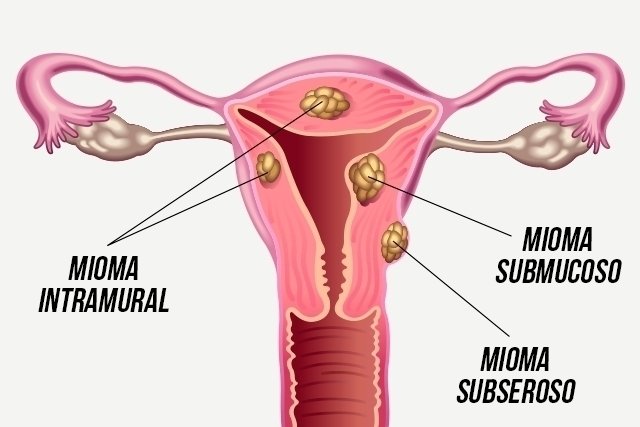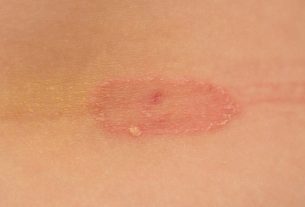Fibroids can be classified as subserous, intramural or submucosal according to the location in which they develop in the uterus, that is, whether they appear on the outermost wall of the uterus, between walls or in the outermost part of the uterus. Most cases of fibroids do not lead to the appearance of signs or symptoms, however these can appear when the fibroid increases in size and puts pressure on nearby organs.
Myoma is a kind of benign tumor, consisting of muscle tissue and fibrous tissue that grows in the wall of the uterus that normally grows faster during pregnancy and menopause. Although in most cases it is not associated with symptoms, it is important to go to the gynecologist so that an evaluation can be carried out and the most appropriate treatment can be indicated, if necessary. See more about myoma and main causes.

1. Subserous myoma
Subserous myoma is a type of myoma that develops in the outermost part of the uterus, called the serosa, and is nourished by a blood vessel, which can also be called pedicled. This type of fibroid does not normally lead to the appearance of signs or symptoms, however, when it grows too much, it can cause compression in nearby organs and lead to the appearance of some symptoms.
The development of subserous myoma is normally related to genetic and hormonal factors, however some factors may favor the appearance of this type of myoma, such as early first menstruation, family history of uterine myoma, diet rich in red meat, alcohol and caffeine, and obesity. .
Main symptoms: Symptoms of subserous myoma are rare and appear when the fibroid grows too large, and there may be pelvic pain, abnormal uterine bleeding and iron deficiency anemia, which happens as a consequence of excessive bleeding. Learn about other symptoms of subserous fibroids.
How to deal with: Treatment for subserous myoma is only indicated when there are signs and symptoms, and may be recommended by a gynecologist, who may recommend the use of medication or surgery to remove the fibroid or to remove the uterus, in more serious cases.
2. Mioma intramural
Intramural myoma is a type of myoma that develops between the walls of the uterus and in most cases is related to changes in female hormone levels. Learn more about intramural fibroids.
Main symptoms: Most cases of intramural fibroids are asymptomatic, however some women may report abdominal pain, increased menstrual flow, constipation and difficulty urinating, these symptoms being more frequent when the fibroid increases in size or when several fibroids appear.
How to deal with: Treatment for intramural fibroids must be indicated by a gynecologist, which may include the use of medication to control the growth of the fibroid and alleviate symptoms, or surgery to remove the fibroid.
3. Submucous myoma
Submucosal myoma develops in the innermost wall of the uterus, and can affect the endometrium and interfere with a woman’s fertility, since the endometrium, which is the tissue that internally lines the uterus, is the site of embryo implantation.
Main symptoms: Submucosal myoma is the type of myoma that is associated with the greatest number of symptoms, as it can compromise the endometrium. Thus, the main symptoms of submucosal myoma are pelvic pain, bleeding outside the menstrual period, increased menstrual flow and iron deficiency anemia.
How to deal with: Treatment for submucous fibroids is aimed at relieving symptoms by reducing the size of the fibroid and performing surgery to remove the fibroid. See more about submucous fibroids.

Sign up for our newsletter and stay up to date with exclusive news
that can transform your routine!
Warning: Undefined array key "title" in /home/storelat/public_html/wp-content/plugins/link-whisper-premium/templates/frontend/related-posts.php on line 12
Warning: Undefined array key "title_tag" in /home/storelat/public_html/wp-content/plugins/link-whisper-premium/templates/frontend/related-posts.php on line 13



